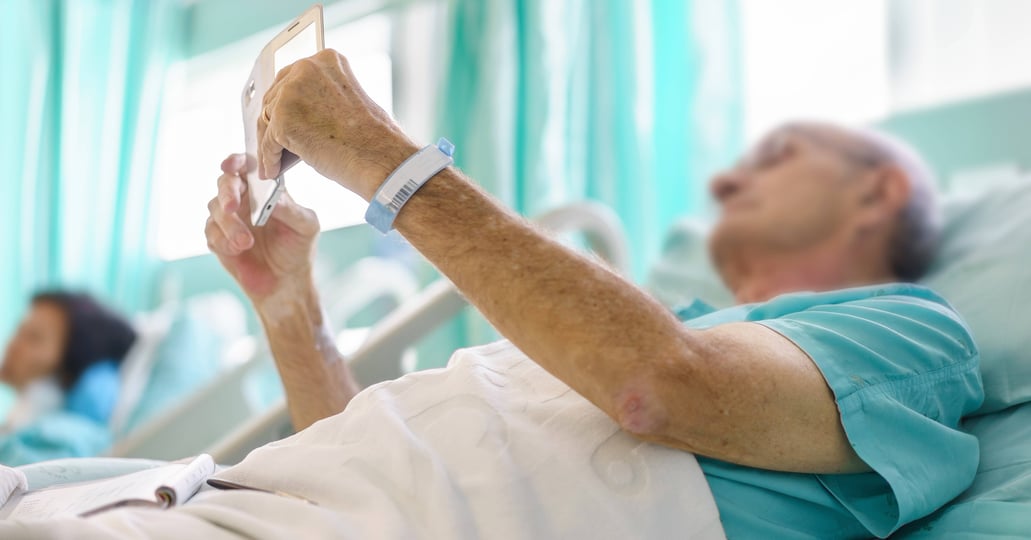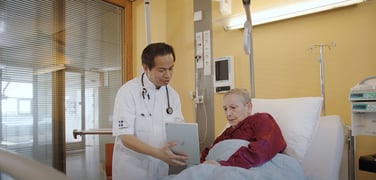Healthcare is one of the most important facets of society we frequently rely on. The pressure the NHS faces shows us how vulnerable the country's healthcare system is when overloaded.
The need for technological transformation is all too apparent, but several areas already see tangible change.
These innovations are paving the way for new technologies to flourish, including mobile apps that offer patient services and video appointments that can take place in the comfort of a patient's home.
15 key healthcare statistics demonstrating the vital role of technology in enhancing the patient experience:
1. 1 in 3 patients said they used online services in 2023 to order repeat prescriptions. (GP Survey 2023)
2. 23.4% of patients said they'd used online services to book appointments. (GP Survey 2023)
3. 17.1% of patients said they used online services to access their medical records in 2023, showing a shift in patients wanting to be actively involved in their healthcare. (GP Survey 2023)
4. There are over 65,300 mHealth apps on the Google Play Store. (Statista)
5. 43 integrated care systems have been established across England since 2022. (NHS Confederation)
6. 8.7% of patients felt isolated from others in the past 12 months, a decrease of 3.5% compared with 2022. (GP Survey 2023)
Keeping people connected during their time in hospital is vital for improving patient experience, speeding up recovery and reducing readmission rate.
7. Approximately 3 in 5 patients tried to use their GP practice website to access information or services, an increase of 0.3% compared with 2022. (GP Survey 2023)
8. The UK health software and IT services market grew by 21% in 2023. (Health Tech World)
9. There were 2.1 million A&E attendances and over 545,000 emergency admissions in November 2023. (NHS England)
10. Only 73% of patients attending A&E in June 2023 were seen within four hours. (NHS Confederation)
Signpost patients to other, more relevant facilities and provide information to help them decide if they need to be in the facility. Linking to live wait times, nearby alternative facilities and relevant information can reduce wait times and bed blocking.
11. 97% of healthcare executives believe continuous technological advances are more reliable than economic, political or social trends in informing their organisation's long-term strategy. (Accenture)
12. 2.1 million employee mailboxes have been migrated to the cloud since 2019. (Accenture)
13. 340 virtual ward programmes have opened across England in 2023, treating over 100,000 patients. (NHS England)
14. Over 400,000 patients are waiting over a year for elective care—the highest number of waiting lists for trauma and orthopaedic services. (NHS Confederation)
Reduce waiting times and missed appointments by providing online booking systems and providing a central place for patient education.
15. 40% of patients have expressed a desire to continue to use telehealth. (Deloitte)
What can you do with these statistics?
The healthcare industry is changing fast and patient retention has become a serious concern for all GPs and Trusts. We’re beginning to see how technology can help alleviate the pressures healthcare facilities are facing by helping to create positive patient experiences. This involves offering better care, providing better services and improving your overall reputation.
To help you do this, we've created a new patient experience guide, which you can download by clicking the button below.

About the author
Rebecca O'Donovan
Becky is the Marketing Director at SPARK TSL, of whom she has worked for since 2012. She is responsible for high-level marketing strategy focusing on lead generation and aiding the vision of the business to ensure business growth.
More articles by the author








